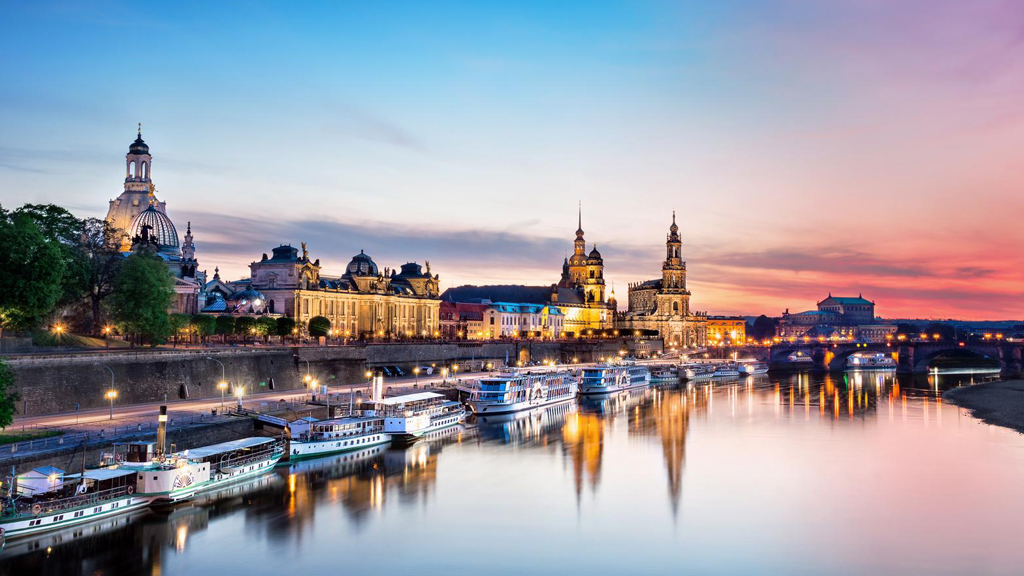|
Landeshauptstadt Dresden - www.dresden.de https://www.dresden.de/de/wirtschaft/smartcity/projekte/event-dresden-information.php 30.11.2018 11:07:00 Uhr 20.11.2024 15:27:56 Uhr |
|
Arrival, Venue Location, Dresden Information
Arrival at Dresden Airport
Dresden International airport is located 9km north of the city centre. To reach the city centre you have two options:
Either you take a taxi directly to your hotel.
Or you use the city train to the main station. In this case please go to the airport information and get a ticket for the city train. Use city train “S2” direction to Pirna. Travel time from Dresden International airport to main station 22 minutes.
Arrival at Dresden Main Station
The main station is located in the city centre of Dresden. All hotels are within walking distance. Otherwise you can take a taxi or use the tram.
DVB - Transport for Dresden - Plan your journey
How to get to the Venue Dresden Fair "Messe Dresden"
The Messe Dresden, where the Periodic Meeting will take place, is located northwest of the center of the city. After your registration, we will send you a Tram-Ticket, with which you have free access to bus and tram. To get to the location, use the DVB Website (please see above DVB -Transport for Dresden - Plan your journey) and follow the instruction for your individual journey planner.
Guests who stay at Holiday Inn:
Departure Point: Prager Straße
Destination Point: Messe Dresden
Travel Information: about 20 min, one change
Guests who stay at Ibis butget and Motel One:
Departure Point: Postplatz
Destination Point: Messe Dresden
Travel Information: about 15 min., one change
Guests who want to use a taxi (costs will not be covered by us):
Address Messe Dresden: Messering 6, 01067 Dresden
History of Dresden
In 1206 Dresden was granted the privilege of being a city but the history of a fishing village and the development to a town began much earlier.
Dresden has a long history as the capital and royal residence for the Electors and Kings of Saxony, who for centuries furnished the city with cultural and artistic splendor. The city was known as the Jewel Box, because of its baroque and rococo city center. The controversial British and American bombing of Dresden in World War II. The bombing gutted the city, as it did for other major German cities. After the war restoration work has helped to reconstruct parts of the historic inner city, including the Katholische Hofkirche, the Semper Oper and the Dresdner Frauenkirche as well as the suburbs.
Before and since German reunification in 1990, Dresden was and is a cultural, educational, political and economic center of Germany and Europe.
Dresden - City of Art
The Frauenkirche, the Zwinger, the Semper Opera House, the Residential Palace, the Elbe river, over 50 museums and more than 30 theatres, both large and small - this is Dresden. The city is one of the most popular tourist destinations in Germany. Millions of visitors come to Dresden every year to ad mire its many attractions. Dresden boasts a unique collection of historic buildings, great history and art treasures and fascinates with its own distinctive character.
The city with its some 540,000 inhabitants not only has a strong cultural at traction, it is also the political, economic and scientific centre of the Free State of Saxony.
Dresden - City of Excellence
Dresden is the capital city of the Free State of Saxony in Germany. It lies in a valley by the River Elbe, near the Czech border.
Dresden is a city of knowledge and skills. Almost half of all workers have scientific and technological careers or have studied a subject in that field. The people of Dresden have a deep-rooted tradition of engineering and openness towards new technologies. The interdisciplinary collaboration between businesses and research facilities helps move Dresden forward. Nowhere else in Germany can be found so many scientists and research institutions in such a small area: there are only a few other cities in Europe with such intensive research as in Dresden. It is the city with the highest level of research in Germany.
In the ranking of German cities, it is the leader in terms of both the scientific workforce and the number of research institutions. A comparison of scientific employees shows that Dresden is the lead of the list. Furthermore, the Dresden University of Technology is one of the 10 largest universities in Germany and part of the German Universities Excellence Initiative.
Das aktivierte Video überträgt Ihre Nutzerdaten zu YouTube, was sie evtl. weiterverarbeit. (Datenschutz).
Dresden in the Christmas Season
In December, many of the city’s streets and squares are transformed into a true winter wonderland, with a host of institutions putting on special festive events.
The Striezelmarkt is Germany’s oldest Christmas market and celebrates its 584th anniversary in 2018. It is accompanied by ten other Christmas markets characterized by traditional sights, sounds and tastes that will whisk you away to the most magical of winter scenes.






